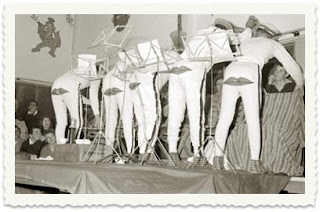Subdividing Happiness
A friend and colleague passed along a fascinating news story, from two years ago, about the development of subdivisions on Israel’s kibbutzim. These are new neighbourhoods, with lots or houses sold to non-kibbutzniks, attached to the kibbutz. The owners have access to the kibbutz facilities—the grocery store, the dining hall (if it’s still operating—many have been shut down), the daycare and schools, the gym and swimming pool, etc.—but aren’t part of the collective ownership of the kibbutz’s agricultural and industrial enterprises.
The kibbutzim are developing these subdivisions as a way to survive financially. The kibbutz gets money from the sale of the houses (although not the land—that is still owned by the state) and then for providing municipal services to the new residents. But this trend also causes social friction, as newcomers begin to mingle with kibbutz members, both of whom have differing levels of emotional and financial investment in the community. (Some kibbutzniks, however, see the developments as a chance for kibbutz-born children who are reluctant to be members to return and live on the kibbutz with their extended families.) One scholar told me of how religiously inclined residents at one of these new neighbourhoods demanded that “their” kibbutz—founded by members who were not just non-religious but all-out anti-religious—build them a synagogue.
Last summer, I certainly saw evidence of construction wherever I went. I walked past the bulldozed ground of new lots at Kibbutz Hanita. I saw an attractive Santa Fe style development on Kibbutz Shamir. Like communities near the Gaza Strip, both of these northern kibbutzim (and many others ear the border with Lebanon) have been the target of rocket attacks. Yet that doesn’t seem to bother prospective buyers, who are quickly buying up kibbutz-based properties. As one kibbutz scholar told me, “The kibbutz is a name, a kind of social good. It’s a brand.” Even if kibbutzniks aren’t as respected as they once were in Israel as pioneers, the communities they’ve created—with high-quality daycare and schools, stores and dining rooms, swimming pools and libraries and other amenities within walking distance, all in an often-picturesque rural setting—are seen as enviable locations to live and raise a family.
The benefits of that way of life, despite the turmoil over “privatization” on many kibbutzim over the past decade, was confirmed by a just-released study (based on 2009 surveys) from the University of Haifa that found that 70% of kibbutz members are satisfied with their lives, only 5% are unsatisfied, and that 78% are happy at their jobs. That compares with 58% of members who said they were satisfied in 2002, the last time the survey was conducted and a turning point in the evolution of the “new kibbutz”. As the movement marks its 100th anniversary, with many changes to its original communal ideals, the kibbutz itself still carries a utopian attraction, it seems, for anyone who hopes to escape the lonely crowd of city life and pursue happiness in a more self-consciously integrated community.


